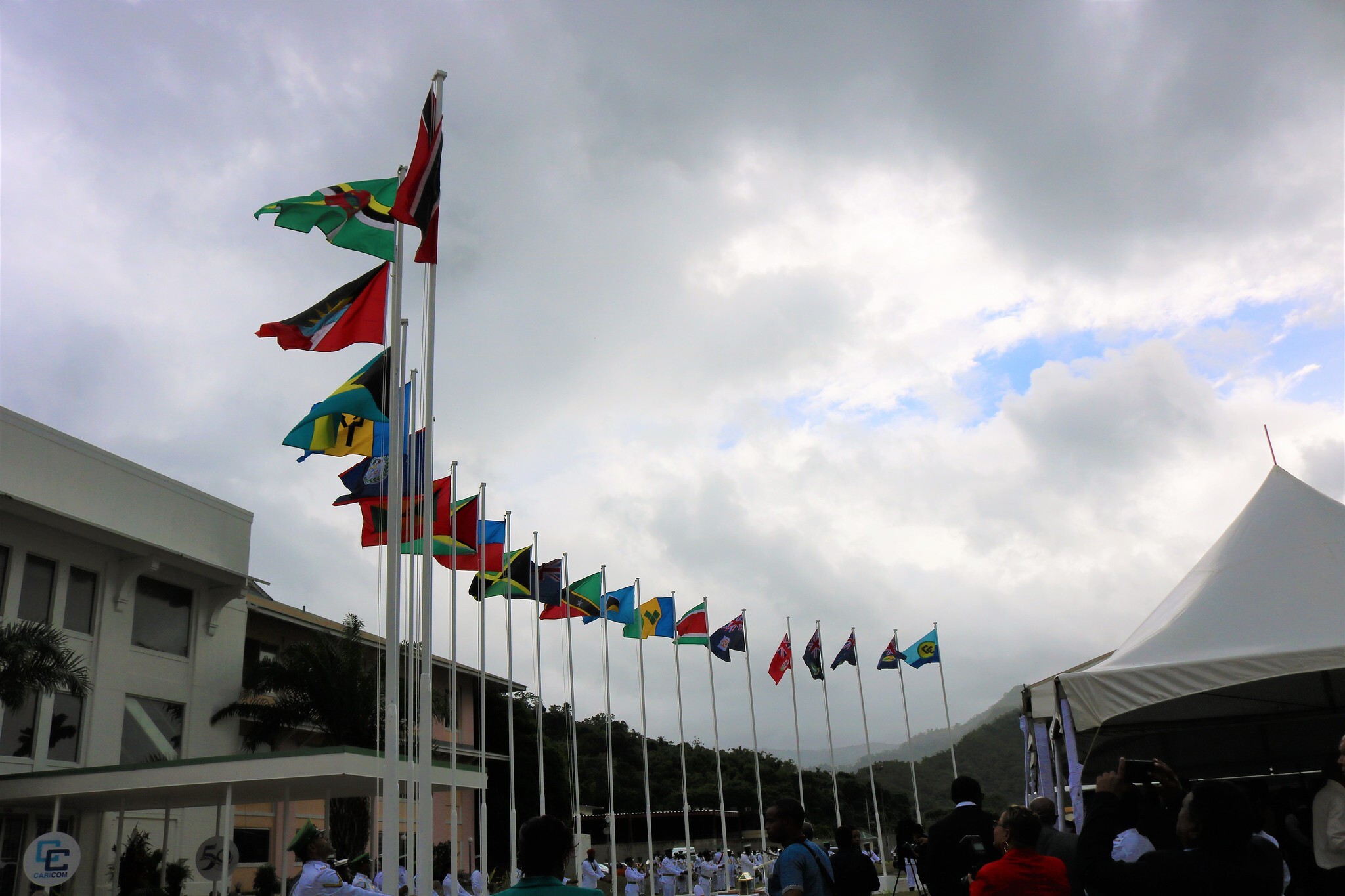Disclaimer: The views and opinions expressed by the author(s) do not represent the official position of Barbados TODAY. By Wayne Campbell
“We must seek our strength in our unity. And then we must dedicate that strength to the building of a new life of opportunity and security for our people.” – Michael Manley.
Frankly speaking there is not much to celebrate concerning the 50th anniversary of the establishment of the Caribbean Community and Common Market (CARICOM). The conceptualisation of CARICOM never had grassroot support from the people of the Caribbean. In fact, CARICOM emerged as a backup plan to counter the failure of the British West Indies Federation in 1958. With the end of the federation, political leaders in the Caribbean made more serious efforts to strengthen the ties between the islands and mainland by providing for the continuance and strengthening of the areas of cooperation that existed during federation.
Many of us who live in the Caribbean region are aware of the existence of CARICOM; unfortunately, this awareness does not translate to any practical benefits of being in such an association. Apart from the Caribbean Examinations Council (CXC) the impact of regional integration is lukewarm. For the most part, regional integration is just a theoretical concept which is far removed from the average Caribbean national.
CARICOM is a grouping of 20 countries: 15 member states and five associate members. It is home to approximately 16 million citizens, 60 per cent of whom are under the age of 30, and from the main ethnic groups of Indigenous Peoples, Africans, Indians, Europeans, Chinese and Portuguese. The community is multi-lingual with English as the major language complemented by French and Dutch and variations of these, as well as African and Asian expressions.
CARICOM came into being on July 4, 1973 with the signing of the Treaty of Chaguaramas by Prime Ministers Errol Barrow for Barbados, Forbes Burnham for Guyana, Michael Manley for Jamaica and Eric Williams for Trinidad and Tobago. The treaty was revised in 2002 to allow for the eventual establishment of a single market and a single economy.
Caribbean Single Market and Economy
In 1989 at Grande Anse, in Grenada, the CARICOM Heads of Government transformed the Common Market into the Single Market and Single Economy formally named the Caribbean Single Market and Economy- CSME. By 2002, the Revised Treaty of Chaguaramas was revised and updated to provide for the removal of existing barriers of trade and to establish a Single Market space which included services, capital, technology, and the free movement of skilled professionals.
The CSME seeks to implement provisions for the removal of trade and professional restrictions. These provisions facilitate the right to establish businesses, provide regional services, the free movement of capital and the coordination of economic policies. In the ensuing years, some Caribbean economies, under the auspices of multilateral lending institutions, implemented structural adjustment programmes having at their core, programmes of economic, financial and trade liberalisation that far exceeded their commitments as expressed in the Treaty of Chaguaramas.
Interestingly, CARICOM Heads of Government have decided on free movement for all CARICOM nationals by March of 2024. This grand commitment by the CARICOM Heads of Government comes against the difficulty and expense associated with regional travel. It is easier and more cost effective to travel to our neighbours in North America than to travel within CARICOM. The Heads of Government should have given more details concerning this grand pronouncement surrounding the free movement of all CARICOM nationals by March 30, 2024. With less than seven months to go before this deadline, it will be fascinating to see whether this announcement will become a reality. In the meantime, all Caribbean nationals should ensure that their passports are not expired.
Pillars of Regional Integration
CARICOM rests on four main pillars: economic integration, foreign policy coordination, human and social development and security. These pillars underpin the stated objectives of CARICOM. Among these are: to improve standards of living and work, the full employment of labour and other factors of production, expansion of trade and economic relations with Third States, enhanced levels of international competitiveness, achievement of a greater measure of economic leverage and the enhanced coordination of member states’ foreign and foreign economic policies and enhanced functional cooperation.
CARICOM AT 50
To commemorate CARICOM’s golden jubilee anniversary heads of government jetted off to Trinidad and Tobago to celebrate this historic occasion. The leaders also joined in a ceremonial flag-raising event that was held at the Convention Centre in Chaguaramas, the venue where the then leaders signed the Treaty of Chaguaramas, on July 4, 1973, heralding the birth of CARICOM. It is noteworthy that US Secretary of State Antony Blinken was also part of the celebrations. His visit was clearly well-calculated given the close proximity of the Caribbean region to the United States of America and the constant struggle between the world’s two superpowers, China and USA, to court nation states.
After being in existence for half a century, what has CARICOM achieved? In fact all is not well within CARICOM as four bodies have been proposed for closure or restructuring: the CARICOM Development Fund (CDF) which provides financial and technical assistance to disadvantaged countries; the Caribbean Centre for Development Administration (CARICAD), which was established to help member states modernise their public sectors, the Caribbean Aviation Safety and Security Oversight System (CASSOS) and CARICOM Competition Commission (CCC), which regulates cross-border business conduct.
There are those who will argue that perhaps, CARICOM will need another 50 years to fully realise all the objectives and aspirations of this association of Caribbean States and what this will mean for regional integration. We should also not forget that there is mistrust and discrimination that are decades old and have undoubtedly worked to undermine the efficacy of CARICOM. Additionally, we must question the sincerity of our leaders to this one Caribbean vision that after 50 years,the achievements of CARICOM are not proportionate to a regional body that has been in existence for half a century.
In the words of Roosevelt Skerrit, Prime Minister of Dominica, Chair of CARICOM, “We believe that this is a fundamental part of the integration architecture, and at 50, we could not leave Trinidad and Tobago and not speak about the core of the regional integration movement, that is, people’s ability to move freely within the Caribbean Community.”
Wayne Campbell is an educator and social commentator with an interest in development policies as they affect culture and or gender issues.
waykam@yahoo.com @WayneCamo #CARICOM ]]>




